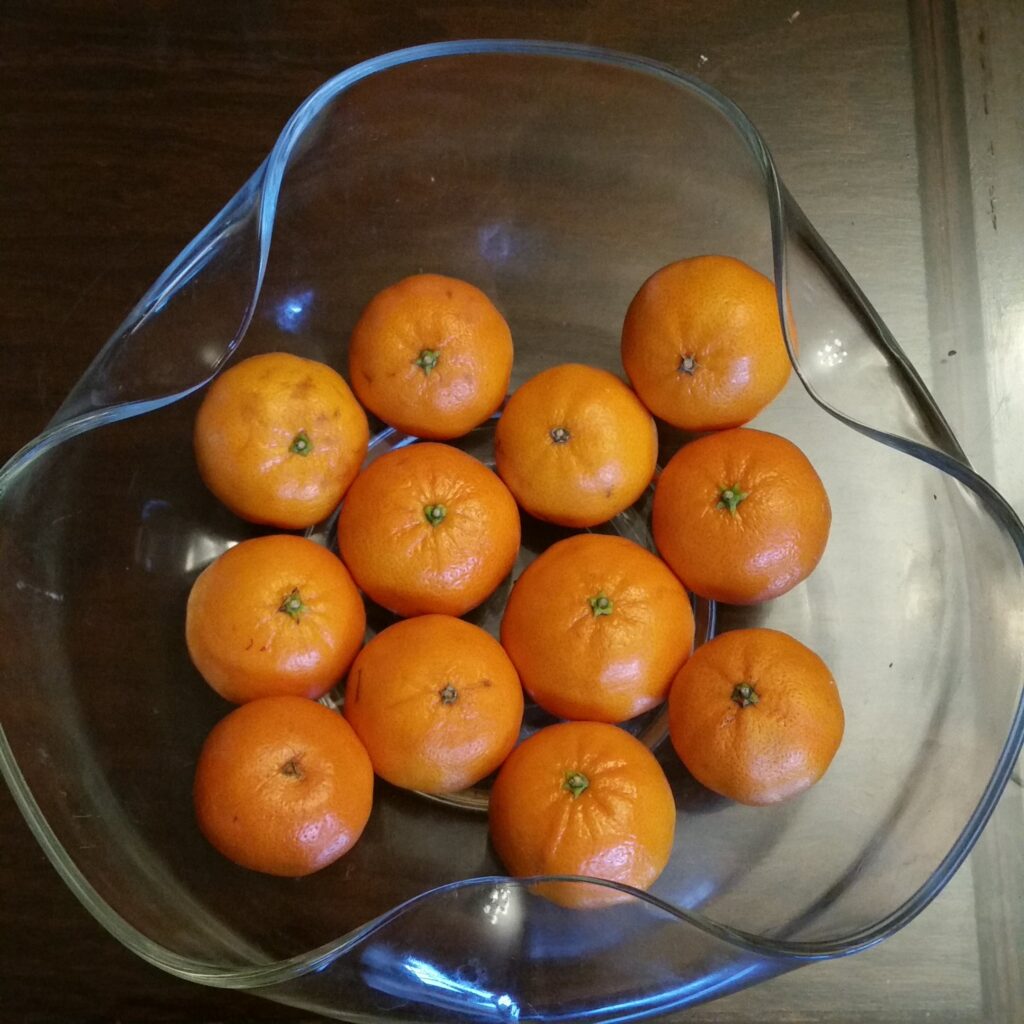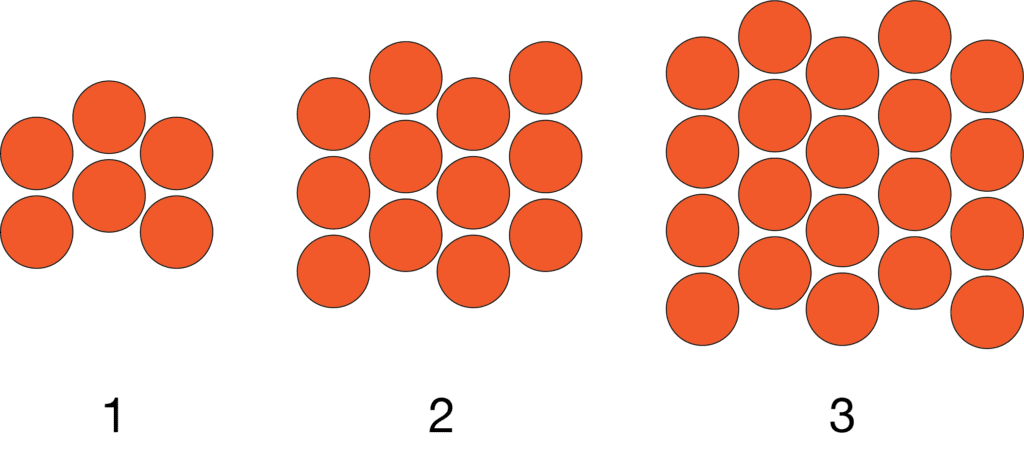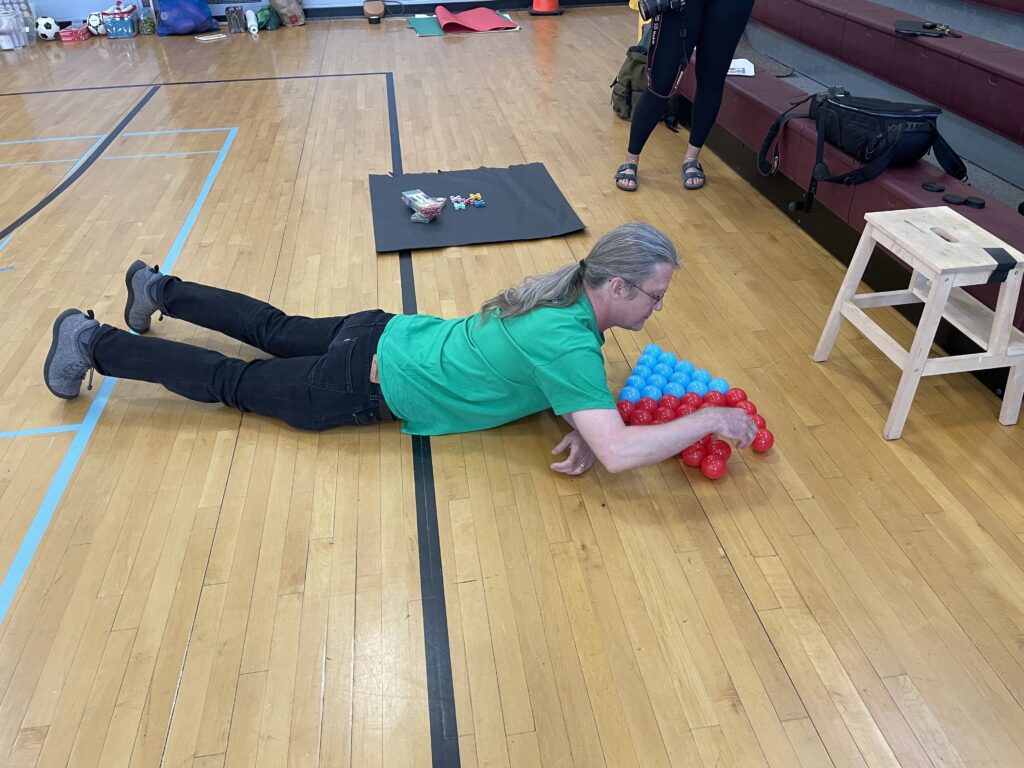What Counts as Counting?
Reading time
Date posted
By Christopher Danielson, author of How Did You Count?, Which One Doesn’t Belong?, and How Many?

Here is a photograph that comes from early development of my new book How Did You Count? How many tangerines are in this bowl? How did you count them? (There is a professionally shot, absolutely gorgeous version of this image in the actual book!)

A common response by adults to my question, “How did you count them?” is “I didn’t count; I multiplied four by three.”
So I’ll clarify: let’s consider counting to mean any work you do to know how many there are.
Multiplying four by three is work, so it counts as counting.
Guessing is not work, and does not count as counting, and the same is true of copying off your neighbor’s paper.
There are lots of types of work you could do, and that’s what makes an image such as this one so interesting to me. I am not at all interested in the fact that there are twelve tangerines. I am deeply interested in how people can know there are twelve tangerines. Here are a few of my favorites, roughly arranged by the likely age of the person counting.
Our youngest mathematicians will count one tangerine at a time, pointing to each one and saying a number aloud. One, two, three, four…point, point, point, point. Commonly, the pointing is haphazard, although sometimes revealing elaborate systems for keeping track of which tangerines they’ve pointed to. An important stage for these young learners is counting in columns or rows or some other organized way.
Older children may skip count. Three, six, nine, twelve. Perhaps they point to each column as they recite the next multiple of three, or to each zigzag row as they count by fours.
Later on, children will use three groups of four or four groups of three or even two groups of six as a way of counting the tangerines. These might be columns or zigzags; they might be diamonds or triangles or other geometric arrangements. The important difference is that children are assigning numbers to groups, and not just to tangerines. This is a sign that they are learning about multiplication—a way of thinking that will be essential to later math learning.
Advancing from counting one-by-one, to skip counting, to counting with groups ensures more efficiency as well as accuracy. More importantly though, this advancement gives you more power!
If you can count with groups, you can create and use patterns to count new and bigger versions of things. For example, here are three stages of a growing pattern.

Stage 2 is our original twelve tangerines. If you saw four zig zags of three in Stage 2, you might find two zig zags of three in Stage 1, and four zig zags of five in Stage 3. You might be able to say that there are (n + 1) zig zags of (n + 2) in Stage n. Counting leads to patterns leads to algebra!
For the last stop on this counting journey, I’ll tell you about The Fundamental Counting Principle. If there are A options for one thing and B options for another, then there are A times B options for the two combined. The Fundamental Counting Principle helps us count abstract things that we can only imagine, such as the number of outfits if I combine 3 options for a shirt and 4 options for a pair of pants. Or the number of possible outcomes when I roll two six-sided dice.
How Did You Count? is a book full of rich opportunities for counting in interesting and creative ways. Wherever you are on your own counting journey—whether haphazardly pointing at one tangerine at a time, or trying to determine a formula for counting a tetrahedron of basketballs—there’s something to inspire you.
I hope you’ll find me online or in person and share the work you’ve done to determine how many there are. Because no matter who you are, your ideas count!
About the Author

Christopher Danielson has worked with math learners of all ages, from teens in his former middle school classroom to his own children, from calculus students to elementary teachers to families who visit Math-On-A-Stick, a large-scale math learning and play space at the Minnesota State Fair. Find more of his writing on his websites, talkingmathwithyourkids.com and christopherdanielson.wordpress.com.
Featured Book

How Did You Count?
From the author of the award-winning Which One Doesn’t Belong? and How Many? comes How Did You Count?, the latest title in Christopher Danielson’s collection that is sure to spark conversation, questioning, and wondering amongst both younger and older students alike.

